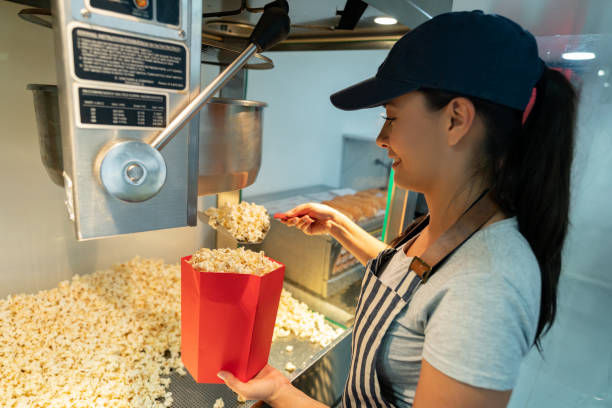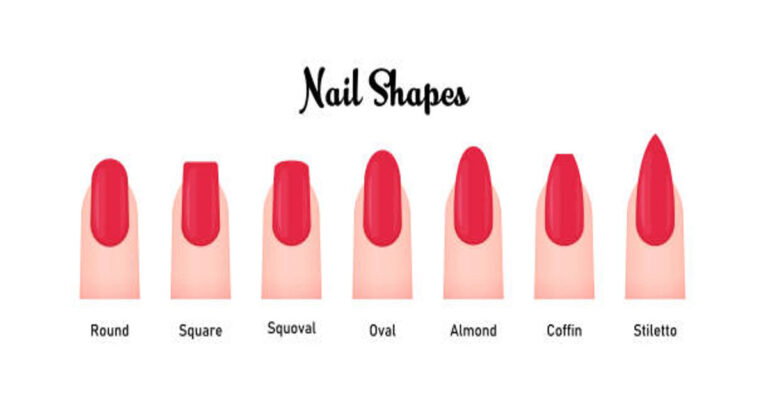Popcorn Machine: Working Process, Types, Benefits & Buying
Popcorn is one of the most universally loved snacks, enjoyed at movie theaters, carnivals, and in homes around the world. Its distinctive aroma, crunchy texture, and versatility have made it a timeless favorite. Central to the preparation of this iconic snack is the popcorn machine—a device that turns hard corn kernels into fluffy, golden, and delicious popcorn. While simple in concept, the popcorn machine represents a fascinating combination of science, engineering, and culinary tradition. This detailed 3,000-word article explores every aspect of popcorn machines — their history, working mechanism, types, materials, benefits, and maintenance tips — and helps you make an informed decision if you are planning to buy one for personal or commercial use.
The Origin and Evolution of the Popcorn Machine
The story of the popcorn machine begins with popcorn itself, a food that dates back thousands of years. Indigenous peoples of the Americas discovered that certain types of corn kernels would explode or “pop” when exposed to heat. They used hot sand or open flames to make popcorn long before the advent of modern cooking appliances.
The first commercial popcorn machine was invented in 1885 by Charles Cretors of Chicago. His invention revolutionized snack food preparation. Before his innovation, popcorn was typically made on stovetops in pans, which made it difficult to control heat and texture. Cretors’ steam-powered machine automated the popping process, ensuring uniform heat distribution and consistent results. It also introduced the idea of popping kernels in oil, enhancing flavor and texture.
Over time, popcorn machines evolved with technology. The steam-based models gave way to electric and gas versions, and later, hot-air poppers for home use became popular. Today, machines range from small countertop units designed for home theaters to large industrial models used in cinemas and amusement parks. Despite modern innovations, the basic principle remains the same: apply the right amount of heat to corn kernels to vaporize their moisture content, creating the iconic “pop.”
How a Popcorn Machine Works
The operation of a popcorn machine may seem simple, but it involves a precise balance of heat, pressure, and timing. Each kernel of popcorn contains a small amount of water inside its starchy shell. When the kernel is heated, the water turns into steam, and the internal pressure rises. Once the pressure reaches a threshold (around 135 psi), the kernel’s outer shell bursts, turning the inside starch into fluffy, white popcorn.
Below is a general step-by-step breakdown of how a typical popcorn machine works:
Step 1: Preheating
The machine is switched on to preheat the kettle or chamber. For electric or oil-based models, the kettle reaches about 180°C to 200°C (356°F to 392°F)—the optimal popping range.
Step 2: Adding Oil and Kernels
In most traditional popcorn makers, oil is added to the kettle to ensure even heat transfer and enhance flavor. The kernels are then added, typically in a ratio of 1 part oil to 3 parts kernels by volume.
Step 3: Popping Process
The heating element maintains a steady temperature. As the kernels heat up, steam builds inside them until they burst open, expanding up to 40 times their original size. A stirring mechanism keeps the kernels moving to prevent burning.
Step 4: Dispensing
Once popping slows (usually after 2–3 minutes), the machine automatically tilts or releases the popcorn into the collection area. Excess unpopped kernels remain in the kettle for disposal.
Step 5: Serving
The final product is fluffy, lightly crispy popcorn, ready to be seasoned with salt, butter, caramel, cheese, or any preferred flavoring.
| Component | Function |
|---|---|
| Kettle | Heats the kernels and oil to the popping temperature. |
| Stirring Arm | Keeps kernels moving to avoid burning. |
| Heating Element | Provides consistent heat to the kettle. |
| Collection Tray | Holds the popped popcorn for serving. |
| Glass or Plastic Enclosure | Prevents popcorn from spilling and maintains warmth. |
Types of Popcorn Machines
Popcorn machines come in various types depending on their intended use, power source, and design. Understanding these categories helps you select the most suitable machine for your needs.
1. Stovetop Popcorn Maker
This is the simplest form of popcorn machine, designed for home use. It consists of a pot with a built-in stirring handle and vented lid. You heat it on a stove, add oil and kernels, and manually stir.
Advantages:
- Low cost and portable.
- Easy to use and clean.
- No electricity required.
Limitations:
- Requires manual operation.
- Heat control can be inconsistent.
2. Hot Air Popcorn Maker
Hot air poppers use circulating hot air to pop kernels without oil, making them a healthy choice. They are electric and work by pushing heated air through a chamber until kernels pop.
Advantages:
- Oil-free and low-fat popcorn.
- Easy to clean.
- Fast popping process.
Limitations:
- Popcorn may be drier and less flavorful.
- Limited capacity compared to kettle-style machines.
3. Kettle Popcorn Machine
These are the classic machines often seen in cinemas and carnivals. They have a built-in heated kettle, a glass enclosure, and a warming deck.
Advantages:
- Produces theater-style popcorn with rich flavor.
- Keeps popcorn warm for long periods.
- Suitable for large batches.
Limitations:
- Requires cleaning after every use.
- Takes up more space and consumes more power.
4. Microwave Popcorn Machine
These compact devices use microwave radiation to heat kernels inside a container designed for even popping.
Advantages:
- Convenient and quick.
- Minimal cleanup.
Limitations:
- Less control over flavor and texture.
- Limited batch size.
5. Commercial Popcorn Machine
Industrial machines are designed for high-volume use in theaters, sports arenas, or snack production lines. They may use gas or electric heating with automated dispensing systems.
Advantages:
- High output capacity.
- Durable and efficient.
Limitations:
- Expensive.
- Requires professional installation and maintenance.
Comparison Table of Popcorn Machine Types
| Type | Heat Source | Oil Use | Capacity | Ideal For | Maintenance Level |
|---|---|---|---|---|---|
| Stovetop | Gas Stove | Yes | Small | Home use | Low |
| Hot Air | Electric | No | Medium | Health-conscious users | Low |
| Kettle | Electric | Yes | Medium–Large | Movie nights, events | Medium |
| Microwave | Microwave | Optional | Small | Quick home snacks | Very Low |
| Commercial | Gas/Electric | Yes | Large | Theaters, fairs, businesses | High |
Materials Used in Popcorn Machines
The choice of materials directly affects durability, performance, and cleaning convenience. Common materials include:
- Stainless Steel: Durable, easy to clean, and resistant to rust. Common in commercial and high-end models.
- Aluminum: Lightweight and affordable, but less durable for heavy use.
- Tempered Glass: Used for enclosures, it resists heat and offers visibility.
- Non-stick Coatings: Found in kettles to make cleaning easier and prevent burnt residue.
- Plastic: Used for lightweight home models but less heat-resistant.
When choosing a popcorn machine, always look for food-grade materials and heat-resistant components to ensure safety and longevity.
Advantages of Owning a Popcorn Machine
A popcorn machine offers numerous benefits beyond convenience.
1. Cost-Effective Snacking
Buying ready-made popcorn from stores or theaters is often more expensive than making it at home. Over time, a popcorn machine pays for itself.
2. Healthier Choices
You can control oil, salt, and toppings, making popcorn a guilt-free snack. Air poppers, for instance, produce popcorn with minimal fat.
3. Customization
You can experiment with different seasonings—cheese, caramel, herbs, or spices—to suit your taste preferences.
4. Entertainment Value
A popcorn machine adds excitement to movie nights, parties, and family gatherings.
5. Durability and Longevity
With proper maintenance, a good machine lasts many years and consistently produces high-quality popcorn.
Cleaning and Maintenance Guide
Proper care ensures the longevity of your popcorn machine and the quality of your popcorn.
Step-by-Step Cleaning Process:
- Unplug and Cool: Always unplug the machine and allow it to cool before cleaning.
- Empty Residue: Remove leftover kernels and debris.
- Wipe Kettle: Use a soft cloth with mild soap and water. Avoid harsh abrasives.
- Clean Glass or Plastic Panels: Use warm water and a gentle cleaning solution.
- Dry Thoroughly: Moisture can cause rust or electrical issues. Ensure all parts are dry before reassembly.
Maintenance Tips:
- Regularly inspect heating elements for buildup.
- Replace worn-out gaskets or seals.
- Use only recommended oils and kernels.
- Avoid using metal utensils that can damage non-stick coatings.
Choosing the Right Popcorn Machine
When buying a popcorn machine, consider the following factors:
| Factor | Details |
|---|---|
| Purpose | Home, commercial, or event use? |
| Capacity | How many servings per batch? |
| Power Source | Electric, gas, or manual? |
| Ease of Cleaning | Removable kettle and panels are ideal. |
| Build Quality | Stainless steel or aluminum construction recommended. |
| Budget | Prices range from affordable home units to expensive industrial models. |
| Aesthetic Appeal | Some models come in retro or theater-style designs. |
Safety Precautions
Popcorn machines, while generally safe, involve heat and oil. Follow these precautions:
- Keep the machine on a stable, heat-resistant surface.
- Never touch the kettle during or immediately after use.
- Avoid overfilling with kernels or oil.
- Keep children away while operating.
- Clean regularly to prevent buildup and potential fire hazards.
Fun Uses Beyond Popcorn
Modern popcorn machines can also be used creatively. Some people use them to roast nuts, puff rice, or even infuse popcorn with flavored oils or spices during popping. At events, they can serve as a centerpiece for snack bars or concession stands.
Troubleshooting Common Issues
| Problem | Possible Cause | Solution |
|---|---|---|
| Popcorn not popping | Low heat or stale kernels | Increase temperature, use fresh kernels |
| Burnt popcorn | Too much oil or overheating | Reduce oil and monitor temperature |
| Uneven popping | Insufficient stirring | Check or clean stirring mechanism |
| Machine not turning on | Electrical fault | Check power source or replace fuse |
| Smoke or smell | Oil residue | Clean kettle thoroughly |
Environmental Impact and Sustainability
Using a popcorn machine can be eco-friendly if you choose reusable containers and bulk kernels instead of pre-packaged microwave bags. Stainless steel machines have a long life span, reducing waste. Opting for organic, locally sourced corn supports sustainable agriculture.
Conclusion
The popcorn machine is more than a simple appliance; it represents a blend of science, craftsmanship, and tradition. From humble beginnings in the 19th century to the sleek, modern machines we use today, it has become an indispensable part of family entertainment, commercial success, and cultural nostalgia. Whether you are buying one for your home theater, a small business, or just as a fun addition to your kitchen, understanding how popcorn machines work and how to care for them will ensure endless bowls of fresh, delicious popcorn for years to come.
FAQs
1. Can I use any type of corn in a popcorn machine?
No. Only specific popcorn kernels (Zea mays everta) pop correctly because of their unique moisture and hull structure.
2. Is air-popped popcorn healthier than oil-popped?
Yes. Air-popped popcorn contains fewer calories and no added fat, though some prefer the richer flavor of oil-popped versions.
3. How often should I clean my popcorn machine?
After every use. Regular cleaning prevents buildup and extends the lifespan of the equipment.
4. What type of oil is best for popcorn machines?
Coconut oil, canola oil, or sunflower oil are popular because they withstand high heat and add pleasant flavor.
5. How long does a popcorn machine last?
With proper care and regular maintenance, a high-quality popcorn machine can last 8–10 years or even longer.







